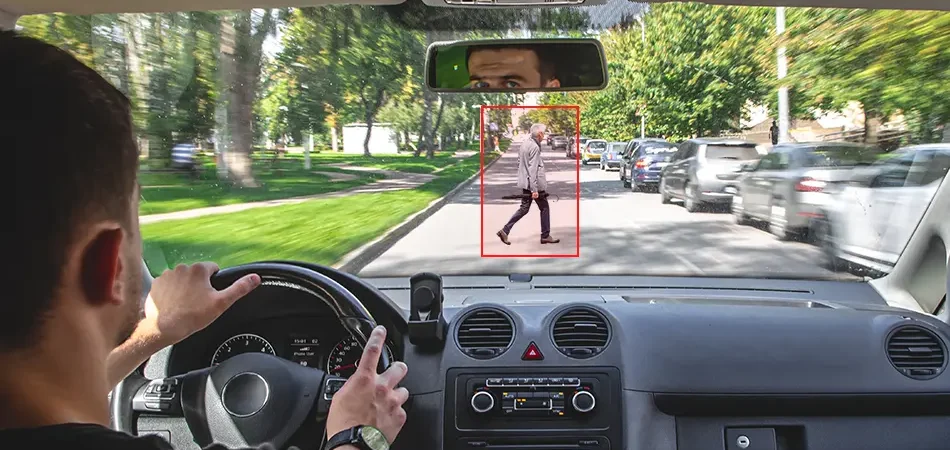Introduction
By fitting the Hydra Digital Signal Processors (DSP), developers can get the most precise and practical results of ADAS operation. This blog post is about what has been done to optimize the pedestrian detection algorithms for the Hydra DSP platform and how it achieves premium tier performance.
The Importance of Pedestrian Detection in ADAS
If it detects an impending accident, the system gives the driver early signals and may even apply the brakes autonomously. However, the design of the pedestrian detection encounter features includes processing vast data volumes with high resolution within milliseconds.
This is possible only with powerful hardware, practical algorithms, and the correct software and hardware combination to deliver fast, dependable solutions to problems, even when conditions are challenging, including large and changeful environments.
Why Hydra DSP?
Hydra DSPs are also optimized for the highest performance level in signal processing tasks. They suit ADAS because they can process stress-intensive data flow and parallel computations. Key advantages of Hydra DSPs include:
- Low Power Consumption: Vital for energy-efficient automotive systems.
- High Computational Power: Helps with real-time processing of complex algorithms.
- Scalability: Adapts additional ADAS features without performance degradation.
Challenges in Algorithm Porting and Optimization
Porting pedestrian detection algorithms to a DSP platform applies many challenges:

Resource Constraints
DSP platforms generally have fewer memory and processing capabilities than microprocessors. This requires resource optimization to support operations, which should run as expected without any disruptions.
Real-Time Processing
ADAS applications require extremely fast data processing because of the high requirements for real-time information processing. When done on a DSP platform, this imposes specific optimization requirements to address the high-speed computations efficiently.
Precision and Accuracy
It is always hard to achieve high accuracy in pedestrian detection. At the same time, it meets the performance and architecture requirements of DSP devices. This is because reliance on the system ought to be balanced with an assurance of accurate results for practical use in ADAS.
Phases to Optimize Pedestrian Detection on Hydra DSP

Algorithm Simplification
Pedestrian detection models are always complicated because detecting pedestrians accurately requires several high-dimensional calculations. On Hydra DSP, such circuit complexity is effectively eliminated using mechanisms such as pruning and quantization.
Pruning: Removes some peripheral or less valuable parameters from the model or calculation process, thus reducing the remaining computations without sacrificing critical detection functions.
Quantization: Transforms transportation parameters of high accuracy to fewer bits, achieving reduced space demands and temporal efficiency.
These measures ensure that the algorithm is simple, highly efficient, and preferable when implemented in a restricted DSP environment while achieving a high detection rate.
Leveraging DSP Parallelism
Thus, activities such as feature extraction, object classification, and decision-making can be parallelized, reducing the total amount of latency.
By employing parallel signal processing, pedestrian detection operations are completed in milliseconds, which is highly desirable in real-time ADAS systems.
Take the First Step Today
Partner with us to unlock the full potential of your ADAS systems. From initial consulting to advanced algorithm optimization on DSP platforms, we provide end-to-end support to bring your product vision to life.
Memory Optimization
On-chip memory resources are scarce in DSP systems, yet they are central to designing and implementing such systems. Minimizing memory consumption is crucial to maintaining the system’s high throughput and performance.
Tiling: Splits the large data into numerous chunks leading to better and feasible data processing constraints to the available memory.
Buffer Sizing: When selecting an optimum whole-buffer size, the memory resource is allocated uniformly to eliminate delay in data access.
These techniques optimize the use of the memory hardware, ensuring that the pedestrian detection algorithm runs optimally even with limited hardware resources.
Custom Kernels
They are optimized to these kernels to achieve the highest performance compared to Hydra DSP specifications.
Specifically, customization allows fine-tuning: it is critical for activities that require a short response time, such as edge detection and feature mapping.
Real-Time Testing and Iteration
In most cases, growing pains refer to the assurance of testing that creates instances where an algorithm may struggle, causing further improvements to be made.
New additions improve system resilience, providing operation at optimal form and function in every case.
With the integration of these phases, Hydra DSP infrastructures secure effective and robust pedestrian detection, setting up a foundation upon which several sophisticated ADAS applications are built.
Advantages of Optimized Pedestrian Detection

- Faster Response Times: This is especially important for applications where the information must be delivered in near real-time.
- Enhanced Accuracy: Ensure pedestrians are detected, especially during challenging situations.
- Energy Efficiency: Prolonging vehicle battery life in electric and hybrid cars.
- Scalability: Providing others with additional ADAS features with a few changes.
Conclusion
Hydra DSPs pedestrian detection optimization feature is an adjunct to ADAS, a fully automated safety technology. First of all, it combines higher-level detection with the speed and adaptability of Hydra DSPs for safer and more Intelligent Vehicles. RIAs such as these will continue to be important innovations within automotive industry, which aims to outline the progressively safer future of roads and driving.

